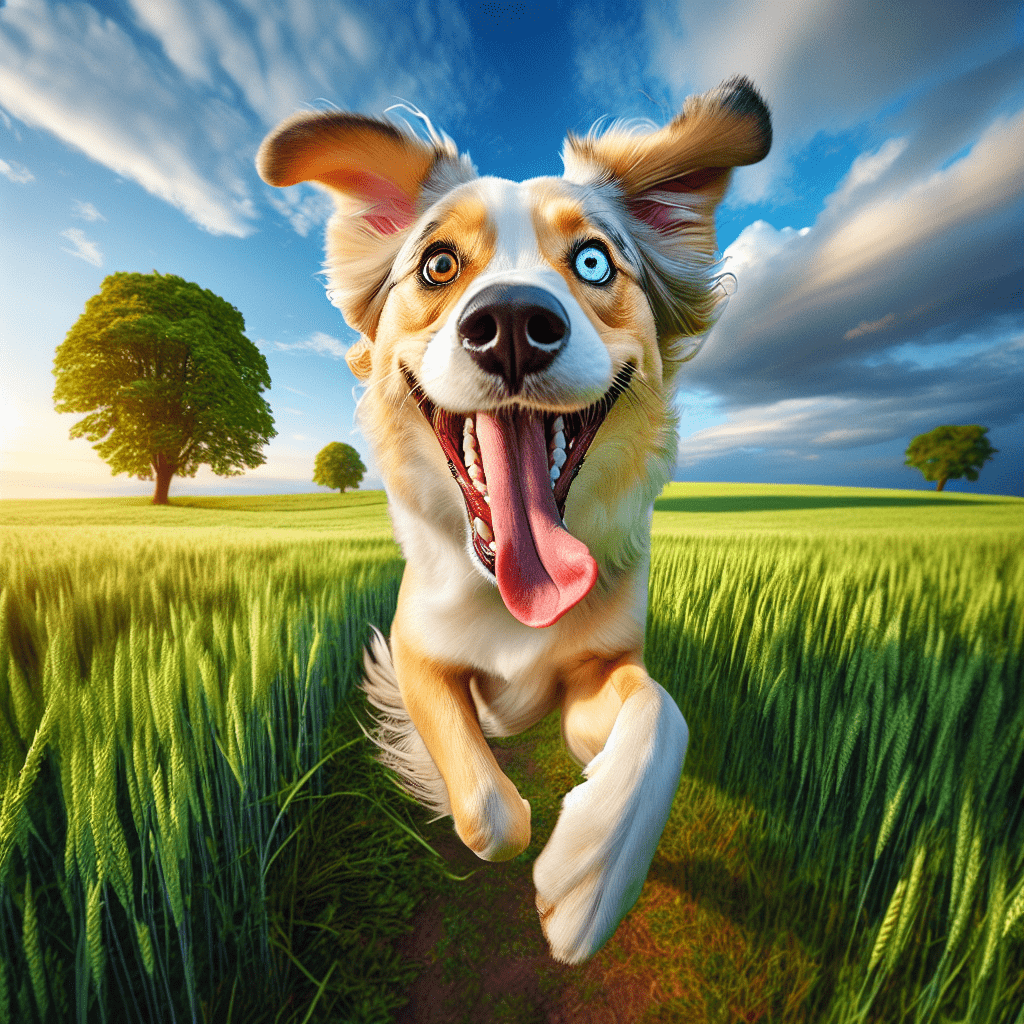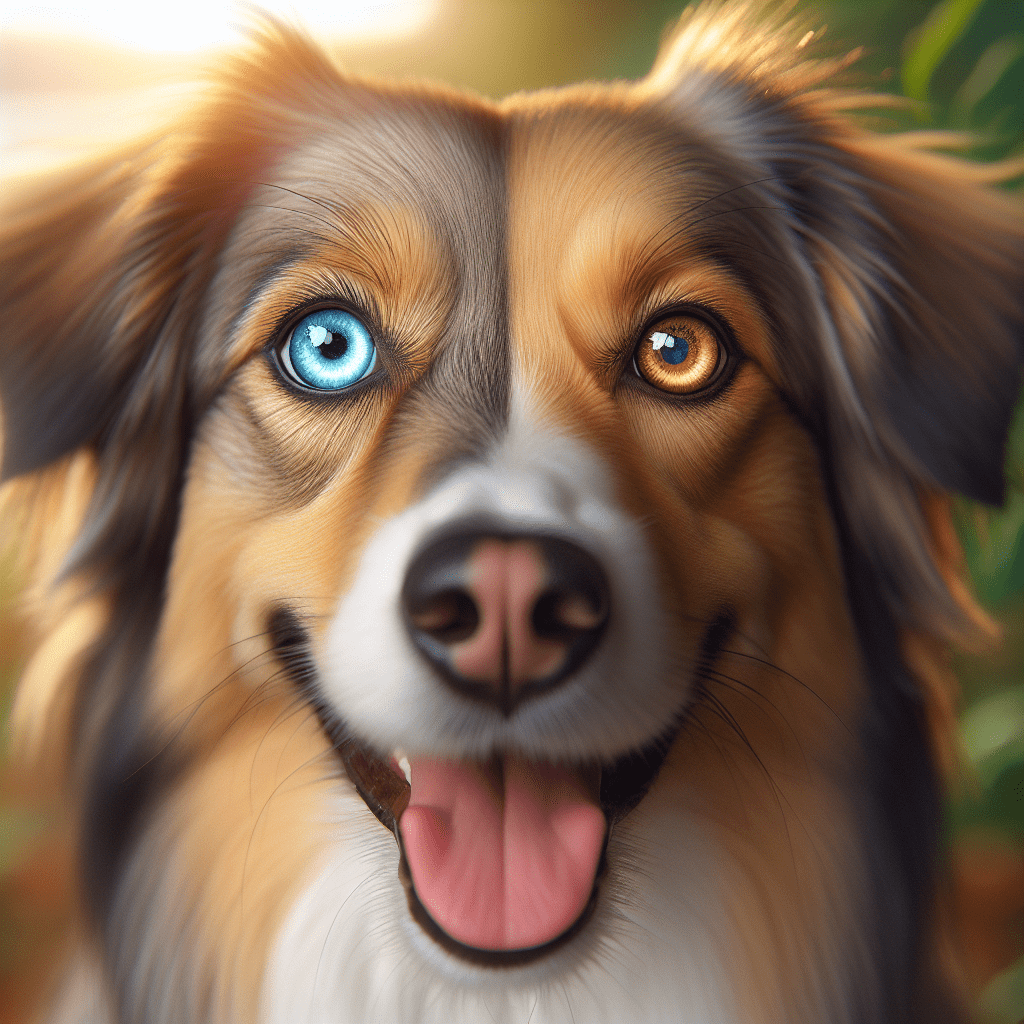What Makes Fido’s Eyes Stand Out?
Ever spotted a dog sporting two different eye colors and thought, “What’s up with that?” Well, that cool feature is known as heterochromia, and trust me, it’s just as enjoyable as it looks. For all the dog lovers and pet parents out there, getting the scoop on heterochromia can amp up your appreciation for our four-legged pals. In this post, we’re diving into what heterochromia is all about, how it happens, and which dog breeds often show off this stunning trait. We’ll also touch on any health stuff you need to know, share some care tips, and shout out a few famous dogs rocking those eye-catching peepers.
Getting to Know Heterochromia
What is Heterochromia?
Heterochromia occurs when an individual has two different-colored eyes or when parts of one eye are a different color from the rest. This can happen in humans, cats, and yes, dogs, too! But why does this happen? Let’s dig in.
Causes of Heterochromia
Heterochromia can be caused by genetics, injury, or disease. In dogs, it’s mostly a genetic trait from their parents. It’s not painful or harmful; it makes your pup look unique and beautiful.
Prevalence Among Different Dog Breeds
Not all breeds are equally likely to have heterochromia. Some breeds are more prone to this condition, making them stand out even more. Let’s explore the science behind it.
Understanding the Genetics
How Does Heterochromia Occur?
Heterochromia happens because the genes that decide our eye color vary a bit. These genes play around with the amount and spread of melanin, which is what colors our eyes.
The Role of Genetics in Eye Color Variation
Genes play a significant role in eye color variation. Sometimes, a mutation or a combination of different genes can result in heterochromia. It’s like nature’s giving your dog an extra dash of uniqueness.
Why Some Breeds Are More Prone to Heterochromia
Some dog breeds are more likely to have heterochromia, and it’s all in their genes. Take the Siberian Husky and Australian Shepherd, for example. Thanks to their unique genetic makeup, they often rock this cool trait.
Dog Breeds with Heterochromia
Spotlight on Breeds
Now, let’s get to the fun part. Which breeds are known for having heterochromia? Here are some of the most common ones:
Siberian Husky
Siberian Huskies catch your eye with their stunning blue peepers, but did you know they can rock two different colored eyes, too? Yep, they’re not just a pretty face – these pups are bursting with energy and love.
Australian Shepherd
Australian Shepherds often have heterochromia. Their eyes can be blue, brown, or even a combination. This breed is known for its intelligence and agility.
Border Collie
Border Collies can also sport heterochromia. They are brilliant and hardworking dogs, making them excellent companions for active families.
Other Breeds with Heterochromia
Other breeds, such as the Dalmatian, Great Dane, and Catahoula Leopard Dog, each bring their own special vibe and quirks, making them absolutely awesome pets.
Visual Appeal of Heterochromia
The visual appeal of heterochromia is undeniable. It makes dogs look even more unique and can be a great conversation starter when you’re out for a walk.
Health Considerations
Is Heterochromia Harmful?
The good news is that heterochromia is generally not harmful. It’s a genetic trait that doesn’t affect your dog’s vision or health. However, it’s always good to be informed.
Regular Health Check-Ups
Even though heterochromia itself isn’t harmful, regular check-ups are essential. Your vet can ensure your dog’s eyes and overall health are in good shape.
When to Consult a Vet
If you spot anything off with your dog’s eyes, like redness, swelling, or some goop, don’t wait around—give your vet a shout immediately. These could be clues that something bigger is happening and needs checking out.
Caring for Dogs with Heterochromia
Eye Care Tips
Just like any other dog, dogs with heterochromia need proper eye care. Make sure to clean their eyes gently and look for any signs of irritation or infection.
Grooming and Maintenance
Regular grooming helps keep your dog’s coat and overall appearance in top shape. During grooming sessions, pay extra attention to your dog’s eyes and ears.
Living Conditions
Dogs with heterochromia don’t require special living conditions. Just ensure they have a comfortable and safe environment. A happy home makes for a happy dog!

Famous Dogs with Heterochromia
Celebrities in the Canine World
Some famous dogs with heterochromia have made a mark in the world. Let’s get to know a few of them.
Bowie the Dog
Named after the rock legend David Bowie, who also had heterochromia, Bowie the Dog has captured hearts with his unique eyes and charming personality.
Max from the Film “Eight Below”
Max, a Siberian Husky from the movie “Eight Below,” is another famous pooch with heterochromia. His striking eyes added to his on-screen charisma.
Impact on Pop Culture
Dogs with heterochromia have stolen the spotlight in pop culture. You see them in movies, TV shows, and even ads, turning them into instant celebs.
Stories of Inspiration
Many dog owners share stories of how their heterochromatic dogs have inspired them. These dogs become symbols of uniqueness and beauty, reminding us that differences are something to be celebrated.
Fun Facts About Famous Dogs with Heterochromia
- Loyalty Symbol: Many fans believe that heterochromic dogs are especially loyal due to their unique appearance, symbolizing unwavering companionship. This perception often adds to their charm and appeal.
- Disney Inspiration: Some Disney characters, like certain heroic or mystical dogs, are inspired by real-life heterochromic dogs. Their striking eyes create a memorable look that leaves a lasting impact on audiences.
- Huskies Leading the Way: Siberian Huskies with heterochromia became especially popular in pop culture due to their association with sled dog teams. Their two-colored eyes have been featured in movies, TV shows, and advertisements, capturing audiences worldwide.
- Social Media Stars: Dogs with heterochromia often become instant stars on Instagram and TikTok due to their captivating eyes. They frequently attract fans who admire their rare appearance, and some even gain sponsorships from pet brands.
- “Ghost Eyes” Nickname: In certain Native American legends, dogs with heterochromia are called “ghost-eyed” dogs. This nickname was associated with their unique ability to guard against bad spirits or “see” what others can’t.
- Therapy Dog Appeal: Many people find heterochromic dogs comforting and therapeutic, as their distinctive appearance gives them an endearing, approachable quality, perfect for therapy or emotional support roles.
Bringing It All Together
Isn’t heterochromia in dogs just the coolest? It’s that quirky trait that ramps up the cool factor of our furry friends by a mile! There’s plenty to geek out about, from the nifty genetics behind it to tips on looking after dogs that rock this look.
Do you have a dog with heterochromia, or are you thinking about getting one? Diving into what makes them stand out is a great way to tighten your bond. If you want to share stories or learn more, why not join our pet-lover community? It’s the perfect spot to celebrate everything that makes our pets uniquely awesome.
Remember to sign up for our newsletter or follow us on social media for all the top tips and tales. We’re excited to have you and your standout pets join the crew!
And just so you know, learning the unique quirks of heterochromia can improve your pet parenting skills. Here’s to enjoying the journey with these excellent companions!
Frequently Asked Questions (FAQs)
What is heterochromia?
Heterochromia is a genetic condition in which a dog has two different-colored eyes or variations of color within one eye. It can be partial or complete, adding a unique and fascinating quality to its appearance.
Is heterochromia common in dogs?
Heterochromia might not be uncommon, but you’ll see it more often in breeds like Siberian Huskies, Australian Shepherds, and Border Collies. It’s like these pups are genetically wired to rock this gorgeous trait.
Does heterochromia affect a dog’s vision?
No, heterochromia does not generally affect a dog’s vision or overall health. It is simply a genetic variation that impacts the color of their eyes.
What causes heterochromia in dogs?
Heterochromia is caused by gene variations that control the distribution and amount of melanin in the eyes. A difference in melanin levels can result in different colors in each eye or within the same eye.
Can heterochromia develop later in life?
Most dogs with two different eye colors are born that way, but it can also happen as they get older or if they get hurt or sick. If you suddenly spot a change in your dog’s eye color, it’s important to check in with the vet.
How do I care for a dog with heterochromia?
Caring for a dog with heterochromia is no different from caring for any other dog. Regular eye check-ups, gentle cleaning, and ensuring their general well-being will keep them happy and healthy.
Should I be concerned if my dog has heterochromia?
Generally, heterochromia is a benign condition and not a cause for concern. However, suppose you notice additional symptoms like redness, discharge, or swelling. In that case, visiting your vet for a check-up is best.
Are there any special considerations for breeding dogs with heterochromia?
If you’re considering breeding dogs, it’s essential to research and understand the genetic implications. While heterochromia is not harmful, ensuring overall genetic health in breeding practices is crucial.
If you have more questions or would like to share your experiences, feel free to contact our community or consult your veterinarian. We’re here to support you and celebrate every dog’s uniqueness!
Sarah Smith is a passionate dog and cat enthusiast, blogger, and pet care expert. With years of experience researching and writing about various dog breeds cat breeds, she brings a wealth of knowledge and insight to her blog, PetPession.com. Sarah loves exploring the unique traits, histories, and care needs of different breeds, helping pet owners make informed decisions. Her mission is to create helpful, friendly, and well-researched content that both educates and celebrates the joy of pet ownership. When she’s not writing, Sarah enjoys outdoor adventures with her own furry friends.


7 thoughts on “Famous Dogs with Heterochromia That Will Melt Your Heart”